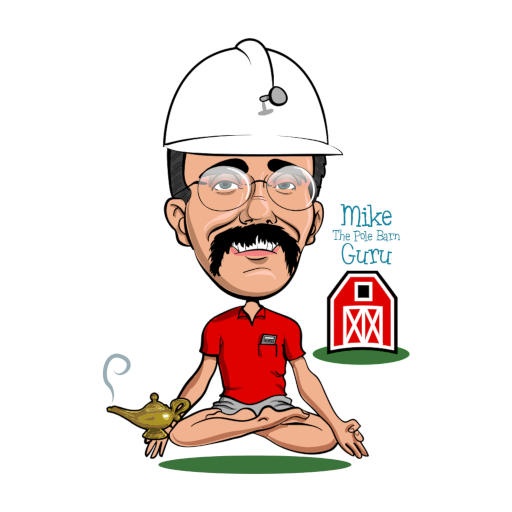Green building is one of the most dynamic market forces in construction today. Pole buildings are considered sustainable, but until very recently little documentation existed on the energy efficiency and the reduced impact on the environment created by pole barns.
 “Green building” is based on producing more sustainable buildings and is the basis for green building certification systems. These include the Leadership in Energy and Environmental Design (L.E.E.D.), Green Globes, National Green Building Standard and the International Green Construction Code. These certification systems encourage many building practices including the use of recycled, regionally produced and rapidly renewable materials.
“Green building” is based on producing more sustainable buildings and is the basis for green building certification systems. These include the Leadership in Energy and Environmental Design (L.E.E.D.), Green Globes, National Green Building Standard and the International Green Construction Code. These certification systems encourage many building practices including the use of recycled, regionally produced and rapidly renewable materials.
Current pole barn construction methods contain many green elements. Green pole barns support reduced site disturbance, less wood required for the structural system, engineered roof systems, wall and roof cavities with room to accommodate insulation to meet International Energy Conservation Code requirements (a must for many green building systems) and flexibility of interior design due to the absence of interior walls and partitions.
One area of study to help support the claims of pole building construction as a green building method is the building’s life cycle — a collection of all inputs (materials and energy) and outputs (product, waste, emissions) required by a structure for the intended service life of a building. The IGCC, the National Green Building Standard and Green Globes include a whole-building Life Cycle Analysis, however currently no green building certification system requires it. It’s important to note, however, green building systems are constantly undergoing evolution. The need to document the environmental effectiveness of buildings, particularly green pole barns, will only continue to increase.
Life-cycle costing (LCC) is a method to determine the entire cost over a product’s intended life cycle. For buildings, the main factors considered are initial cost, operating costs, replacement costs and maintenance or repair costs. This economic assessment includes detailed energy modeling of the structure. It does not include environmental impacts of the building and is not currently included in any of the green building certification systems. The main use for LCC is a purchasing tool for predicting the expected costs of a structure, rather than focusing only on the initial construction costs.
Building owners, engineers, architects and other specifiers should be aware – in most low rise buildings, pole building systems can reduce the amount of structural materials used compared to other types of construction. As Green Buildings become more popular and in higher demand, pole buildings in comparison to other types of building designs, will be the hands down winner.







I am with with this idea and must create awareness about the importance of this matter and how this will be a good way to start taking part in every eco friendly activities that tend to help the preservation of our mother nature.
These are valuable information regarding Eco-friendly means of improving our homes. These facts are useful in ensuring that we do not harm the environment while increasing our houses’ curb appeal. Thanks for sharing a very informative article.